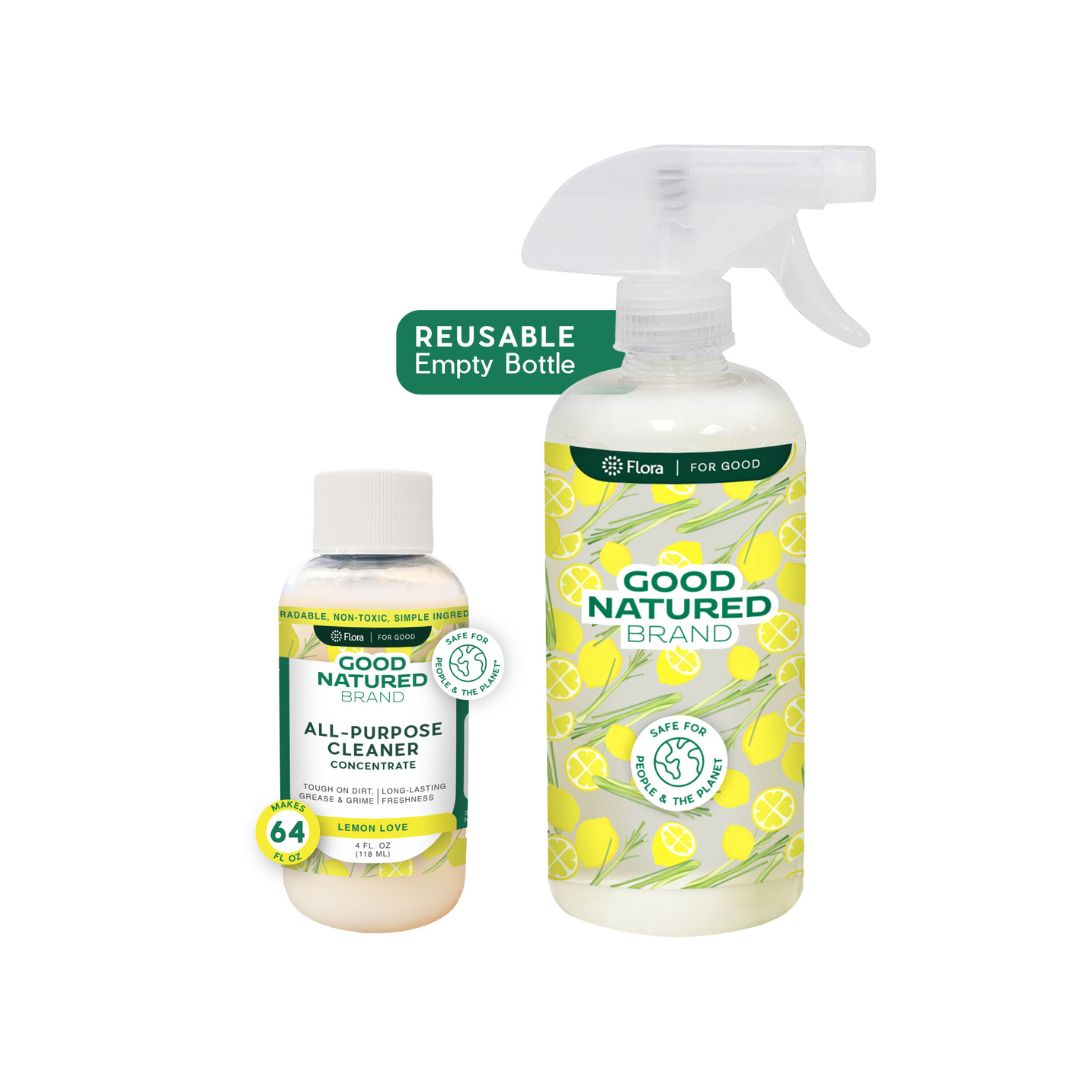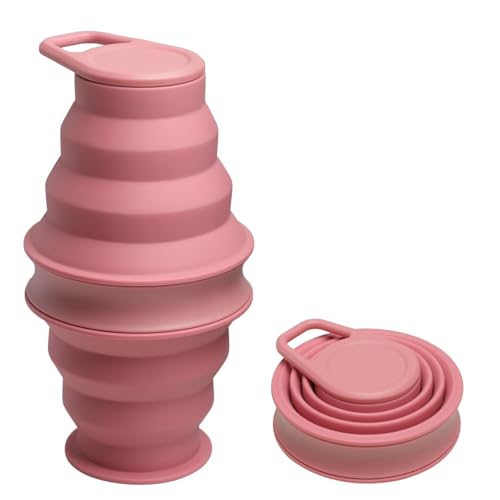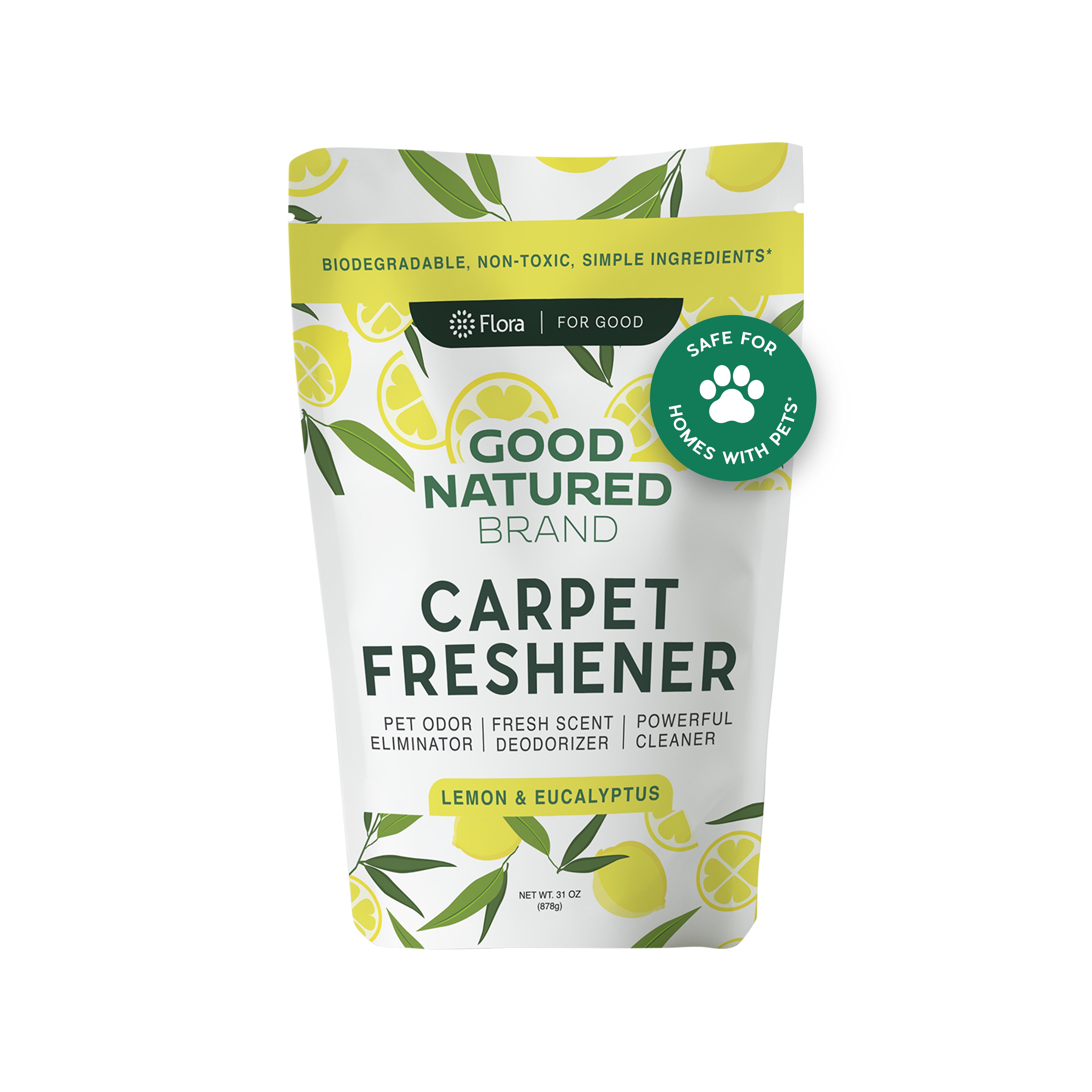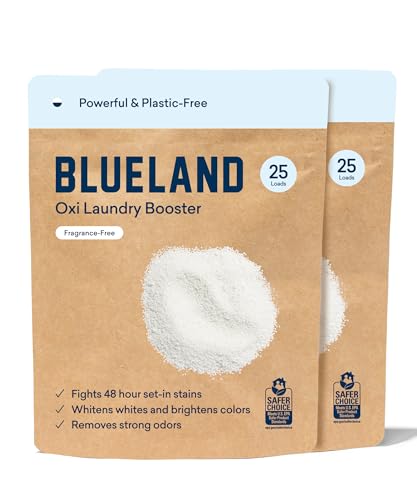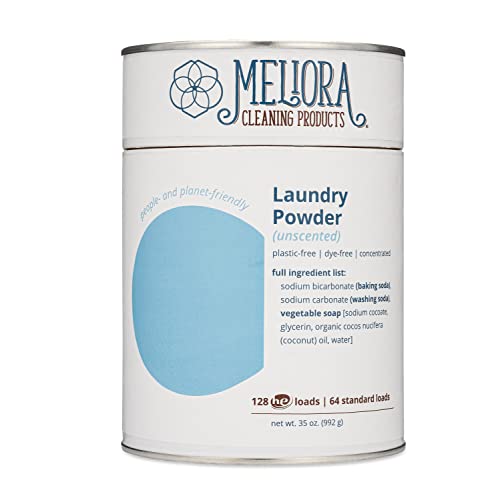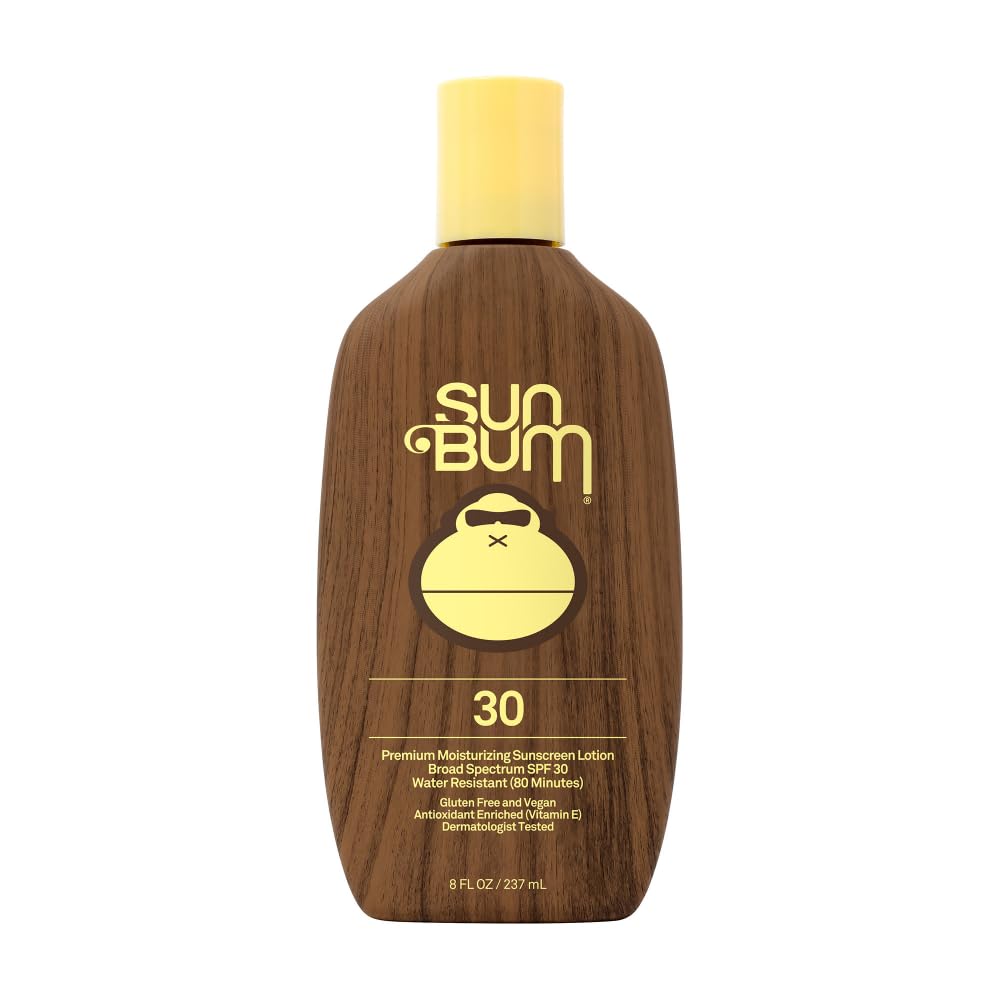
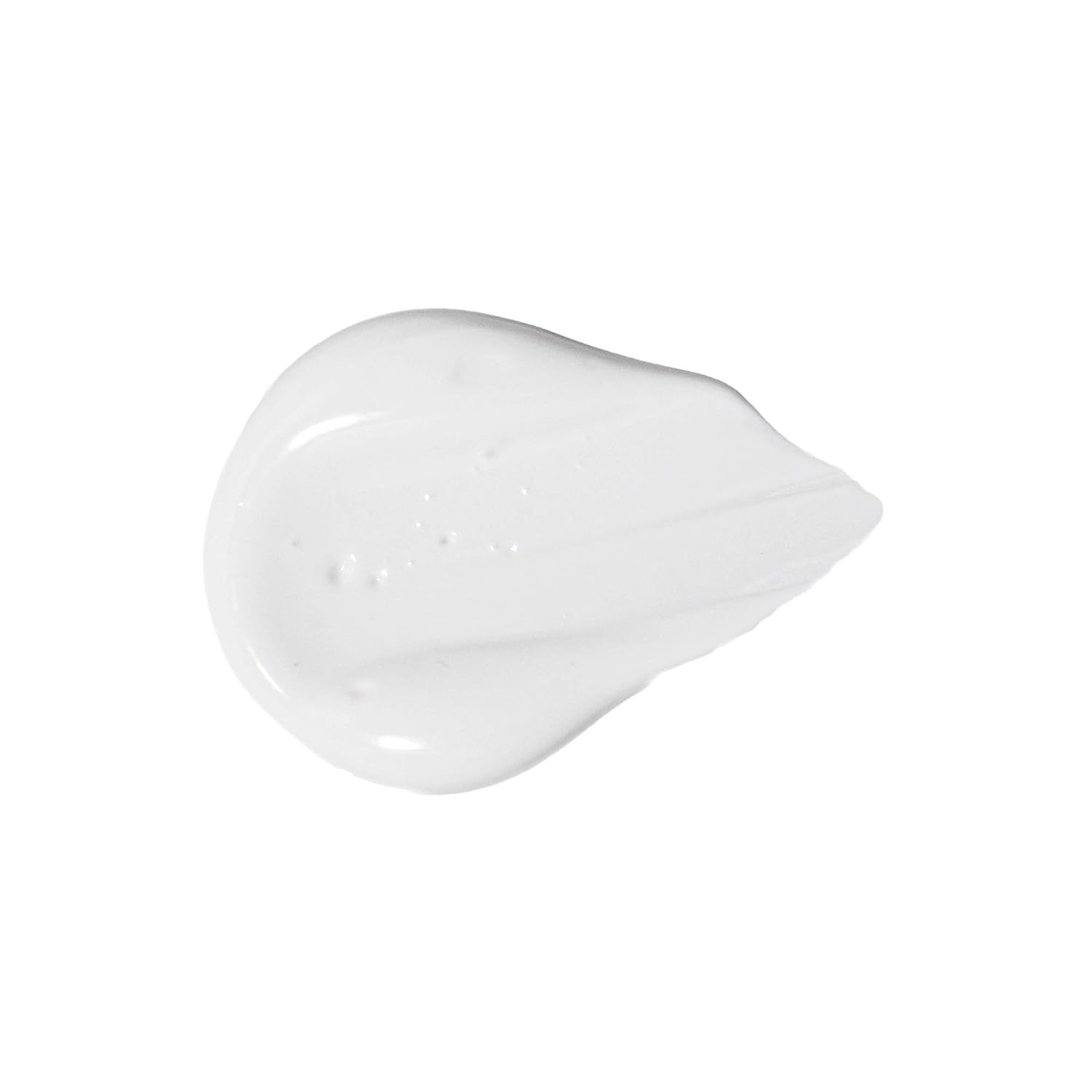
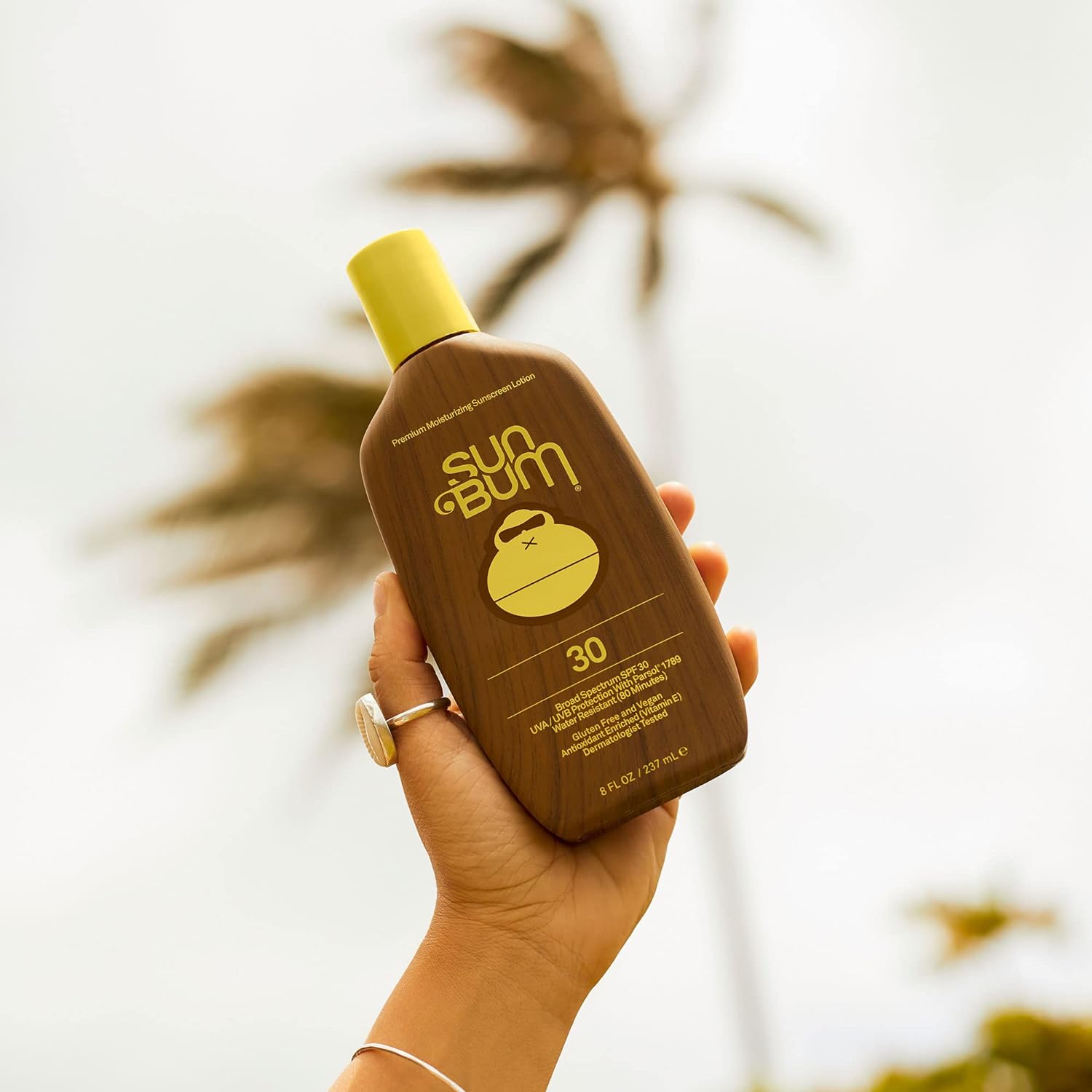
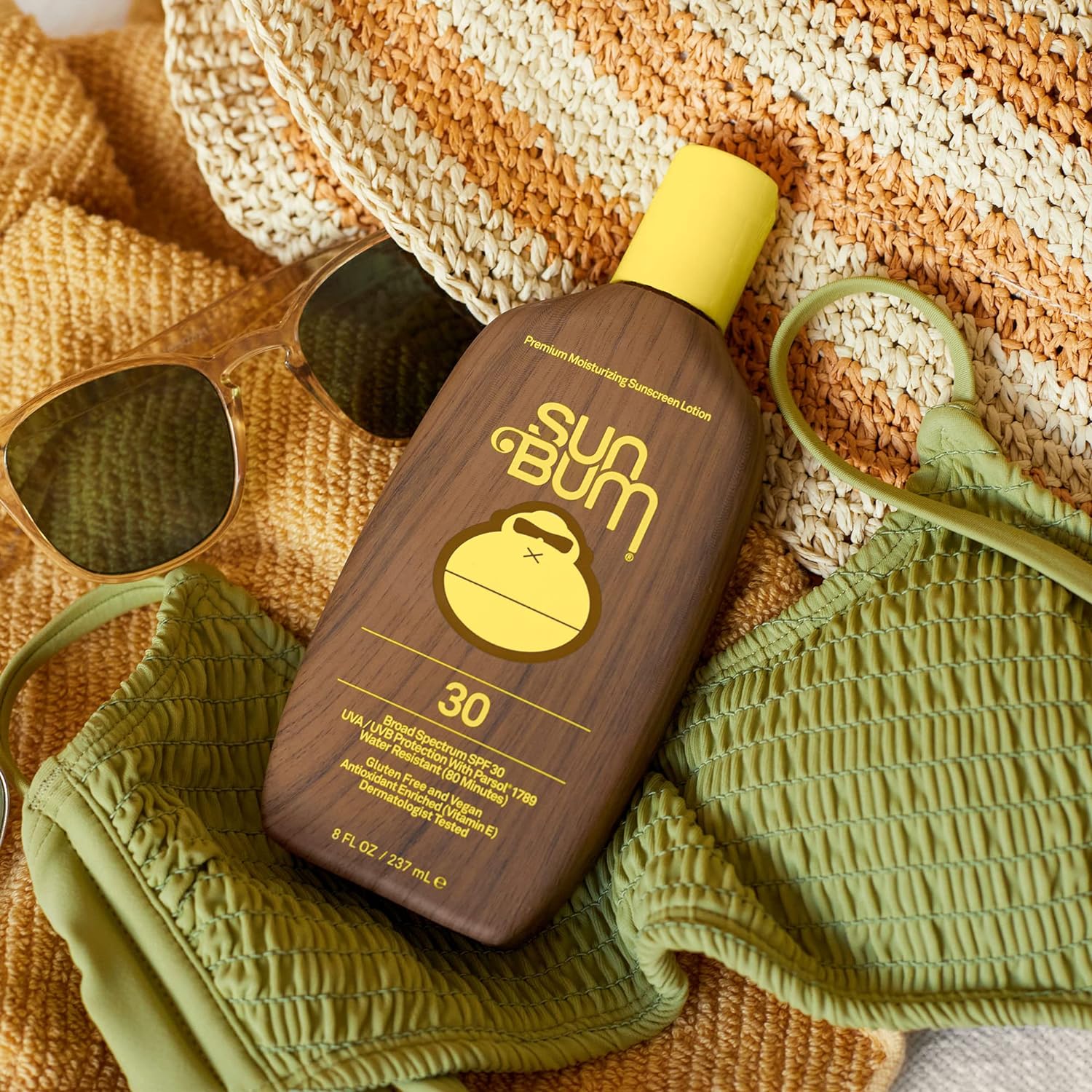
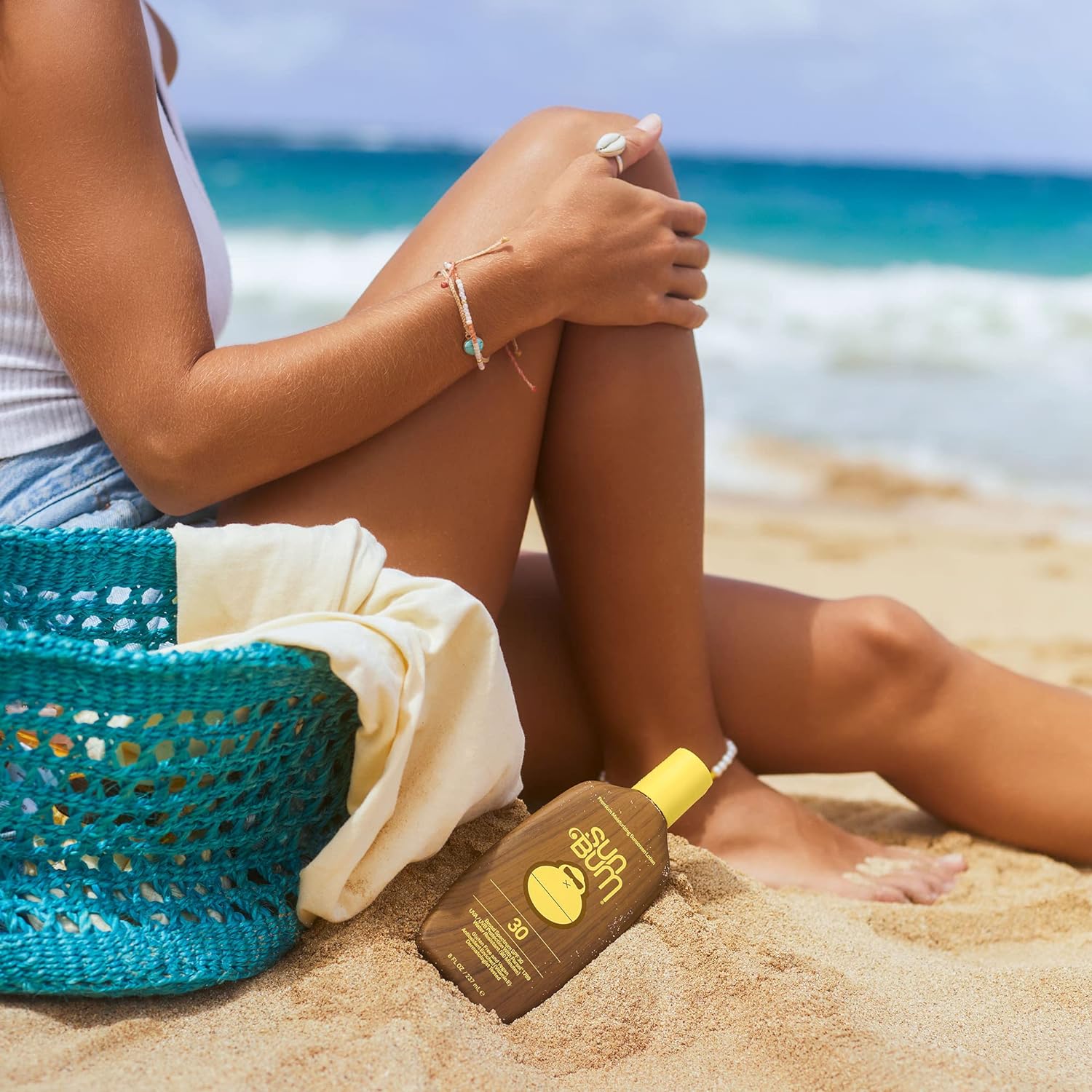
Sunscreen Lotion | SPF 30, Vitamin E, Reef-Safe, 8 oz (Pack of 1)


Polyaminopropyl Biguanide
High RiskPolyaminopropyl biguanide is a synthetic polymer used primarily as a preservative and antimicrobial agent in personal care and household products. It functions by inhibiting the growth of bacteria and fungi, thereby extending product shelf life and maintaining safety for users.
Sustai Insights
Polyaminopropyl biguanide effectively serves as a preservative, enhancing product longevity. However, it has been associated with skin irritation and has high use restrictions, indicating potential safety concerns. Regulatory bodies have issued warnings regarding its use, categorizing it as high risk due to these adverse health effects. Additionally, its environmental impact raises concerns about pollution and bioaccumulation. Safe usage practices are recommended, and alternatives such as natural preservatives should be considered.
Bht
High RiskButylated hydroxytoluene (BHT) is a toluene-based synthetic antioxidant commonly used in cosmetics and food products to prevent oxidation and extend shelf life. It functions by inhibiting the free radical chain reaction that leads to the degradation of fats and oils, thereby maintaining product stability.
Sustai Insights
BHT serves as an effective antioxidant, helping to preserve product integrity. However, it has been associated with high allergenic potential and raised concerns regarding developmental neurobehavioral toxicity. Environmental risks include its classification as a pollutant with potential bioaccumulation. Regulatory agencies have noted various restrictions on its use. Overall, the ingredient carries a high risk due to these factors and should be used with caution, considering safer alternatives when possible.
Methylisothiazolinone
High RiskMethylisothiazolinone is a widely-used preservative in cosmetic and personal care products, known for its antimicrobial properties. It helps prevent the growth of bacteria and fungi, extending the shelf life of formulations. It is often used in leave-on and rinse-off products, including lotions and shampoos.
Sustai Insights
Methylisothiazolinone serves as an effective preservative, combating microbial growth in various personal care items. However, it is associated with a high risk of allergic reactions and skin sensitization, especially in individuals exposed repeatedly. Regulatory bodies have imposed use restrictions due to these health concerns. Additionally, while it is not considered a carcinogen, its environmental impact includes potential pollutant characteristics. Overall, the risk associated with methylisothiazolinone is high, prompting caution and consideration of safer alternatives.
Fragrance
High RiskFragrance refers to a mixture of aromatic compounds used in products to provide scent. It is commonly listed as 'fragrance' or 'parfum' on product labels and can serve various functions, including enhancing user experience and masking undesirable odors.
Sustai Insights
Fragrance offers functional benefits by improving product appeal; however, it poses significant health risks, notably a high likelihood of causing allergies and allergic contact dermatitis. Environmental risks include potential pollution and endocrine disruption, though its overall carcinogenicity is low. Regulatory bodies have noted concerns regarding its use, leading to a high-risk classification. Safe usage practices should be observed, and alternatives such as natural essential oils are recommended for those sensitive to synthetic fragrances.
Butyloctyl Salicylate
Medium RiskButyloctyl salicylate is a synthetic compound often used in cosmetic formulations for its ability to enhance skin absorption and stability of products. It primarily functions as a UV filter, providing protection against harmful sun rays in various personal care items.
Sustai Insights
Butyloctyl salicylate offers functional benefits as a UV filter and enhances skin absorption in formulations. However, it is associated with moderate usage restrictions due to potential health risks such as skin irritation and concerns regarding enhanced absorption. Environmental considerations include its pollutant potential, though it is not highly bioaccumulative. Regulatory bodies have placed limitations on its use in certain products, reflecting a medium risk assessment overall. Safe usage practices are advisable, and alternatives like natural UV filters may be considered.
Tocopheryl Acetate
Medium RiskTocopheryl acetate is a chemical compound that serves primarily as a form of Vitamin E. It is used in cosmetic and personal care products for its antioxidant properties and to enhance skin stability and moisture.
Sustai Insights
Tocopheryl acetate is valued for its functional benefits, including acting as an antioxidant and skin conditioning agent. It is generally considered to have low carcinogenicity and reproductive toxicity risk, although it poses a moderate concern for allergies. Environmental risks are minimal, with no significant pollutant or bioaccumulation potential noted. Regulatory bodies have not imposed significant restrictions. Safe usage practices should be followed, particularly regarding enhanced skin absorption. Alternatives like natural Vitamin E may provide similar benefits with potentially lower allergenic properties. Overall, this ingredient presents a medium risk assessment.
Octisalate
Medium RiskOctisalate is a weak UVB absorber commonly used in sunscreen formulations to enhance sun protection. It functions by absorbing ultraviolet radiation, thereby preventing sunburn and skin damage. This ingredient is often combined with other UV filters to achieve a broad-spectrum protective effect.
Sustai Insights
Octisalate provides effective UVB protection in sun care products, contributing to skin safety by reducing sunburn risk. Its environmental impact is moderate, with some concerns about its potential as an endocrine disruptor and possible restrictions in specific regions. Health risks are generally low, with low to moderate concerns regarding allergies and immunotoxicity. Regulatory bodies have verified its safe use under certain conditions, leading to an overall moderate risk assessment. For safer alternatives, consider mineral-based UV filters or other approved organic compounds.
Dimethicone
Medium RiskDimethicone, also known as polymethylsiloxane, is a silicone-based polymer commonly used in personal care products for its smooth application and skin conditioning properties. It acts primarily as an emollient, providing a silky feel while forming a protective barrier on the skin.
Sustai Insights
Dimethicone provides functional benefits as an effective emollient and skin protectant, contributing to product stability and sensory attributes. It is considered low risk for carcinogenicity, allergies, and reproductive toxicity, but has moderate usage restrictions due to environmental persistence and bioaccumulation concerns. Regulatory bodies have issued advisories regarding its use in certain formulations. Overall, its risk level is assessed as medium, and users are advised to follow recommended usage practices. Alternatives like natural oils or butters may offer sustainable options.
Homosalate
Medium RiskHomosalate is a synthetic sunscreen ingredient primarily used in cosmetic formulations to absorb UV radiation, providing protection against sun exposure. It is commonly included in sunscreen products and is known for its effectiveness in enhancing the SPF of formulations.
Sustai Insights
Homosalate functions effectively as a UV filter, contributing to sun protection in cosmetic products. However, it is associated with moderate regulatory restrictions and concerns regarding its potential as an endocrine disruptor, though cancer and allergy risks are considered low. Environmental implications include its status as a pollutant, with some risk of bioaccumulation. Regulatory bodies have issued advisories that warrant caution in usage, leading to an overall moderate risk assessment. Safer alternatives may be available for consumers seeking to minimize exposure to this ingredient.
Avobenzone
Medium RiskAvobenzone is an organic compound commonly used in sunscreens and skincare products for its ability to absorb ultraviolet (UV) radiation. It provides broad-spectrum protection against UVA rays, helping to prevent skin damage caused by sun exposure. However, it is known to degrade when exposed to sunlight unless stabilized with other ingredients.
Sustai Insights
Avobenzone effectively protects against UVA rays, making it a valuable ingredient in sun care products. However, it has moderate use restrictions due to its instability in sunlight, which can lead to enhanced skin absorption and potential irritation. Regulatory bodies restrict its use in certain formulations, categorizing it as having low concerns for cancer, allergies, and reproductive toxicity. Environmental risks include its potential as a pollutant, though it is not highly bioaccumulative. Overall, the ingredient poses medium risk, and users should adhere to product recommendations for safe application.
Polyvinyl Butyral
Low RiskPolyvinyl butyral is a polymer produced by the polymerization of polyvinyl alcohol and is primarily used as an adhesive and in coatings. It is valued for its optical clarity, flexibility, and adhesion properties, making it suitable for applications in laminated safety glass and various coatings.
Sustai Insights
Polyvinyl butyral offers functional benefits such as strong adhesion and clarity, making it effective in automotive and architectural glass laminates. It poses low health risks, with minimal concerns regarding carcinogenicity, allergies, or reproductive toxicity. Environmentally, it is not classified as a significant pollutant and has low bioaccumulation potential. Regulatory bodies have not imposed restrictions on its use. Overall, the ingredient is assessed to have a low risk profile, making it a suitable choice in various applications.
Styrene/Acrylates Copolymer
Low RiskStyrene/acrylates copolymer is a polymer derived from the polymerization of styrene and acrylate monomers. It is commonly used in cosmetic and personal care products for its film-forming properties, providing texture, stability, and adhesion to formulations.
Sustai Insights
Styrene/acrylates copolymer functions effectively as a film former and stabilizer in various products, contributing to their performance and sensory attributes. It has a low risk profile, with minimal concerns regarding carcinogenicity, allergenic potential, or reproductive toxicity. Environmental assessments indicate low pollutant potential and limited bioaccumulation. Regulatory bodies do not impose significant restrictions on its use. Safe usage practices should be followed, particularly for sensitive populations. While alternatives exist, this ingredient poses low overall risk based on the current scientific consensus.
Caprylyl Methicone
Low RiskCaprylyl methicone is a siloxane polymer commonly used in cosmetic formulations for its emollient properties. It aids in improving the texture and feel of products, providing a smooth application and enhancing spreadability. It is often included in formulations for skin and hair care.
Sustai Insights
Caprylyl methicone offers functional benefits as a skin conditioning agent, enhancing product texture and feel. It is not associated with significant health risks, showing low concerns for carcinogenicity, allergies, or reproductive toxicity. Environmental risks are also minimal, with low potential for bioaccumulation. Regulatory assessments indicate no major restrictions. Overall, it has a low-risk profile, making it a suitable ingredient in various cosmetic products. Safe usage practices should still be followed, and alternatives may include plant-derived emollients for those seeking greener options.
Ethylhexyl Stearate
Low RiskEthylhexyl stearate is an ester derived from 2-ethylhexanol and stearic acid, commonly used in cosmetic formulations as an emollient. It functions to enhance skin feel and texture, providing a smooth application and helping to improve the spreadability of products.
Sustai Insights
Ethylhexyl stearate offers functional benefits as an emollient, enhancing product texture and application. It is generally considered to have low health risks, with minimal concerns regarding carcinogenicity, allergies, and reproductive toxicity. While it may cause moderate irritation in some cases, environmental risks are low, as it does not significantly contribute to pollution or bioaccumulation. Regulatory assessments do not indicate major restrictions. Overall, it is assessed as a low-risk ingredient, suitable for common cosmetic use, although alternatives may be considered for those seeking more sustainable options.
Disodium Edta
Low RiskDisodium EDTA (ethylenediaminetetraacetic acid) is a chelating agent commonly used in cosmetics and personal care products to bind metal ions and enhance product stability. It helps prevent the deterioration of formulations by minimizing the effects of trace metals, thus improving the overall efficacy and shelf life of the product.
Sustai Insights
Disodium EDTA serves as an effective stabilizer and preservative in various formulations, aiding in the prevention of product degradation. It is considered to have low health risks, with minimal concerns regarding carcinogenicity, allergies, or reproductive toxicity. Environmentally, it is not classified as a significant pollutant or bioaccumulative substance. Regulatory bodies, including the FDA, have noted its safe use in specified concentrations. Overall, the ingredient is assessed to have a low risk profile, with no major health or environmental concerns, making it a reliable choice for product formulation.
Diethylhexyl 2,6 Naphthalate
Low RiskDiethylhexyl 2,6 naphthalate is a phthalate compound primarily used as a plasticizer in various products, enhancing flexibility and durability. It is commonly found in materials such as plastics, adhesives, and coatings, contributing to product performance.
Sustai Insights
Diethylhexyl 2,6 naphthalate serves as an effective plasticizer, improving the workability and longevity of materials. While it has low concerns regarding cancer, allergies, and reproductive toxicity, there are moderate risks related to cumulative exposure from multiple sources. Environmentally, it is not classified as bioaccumulative or a significant pollutant. Regulatory bodies currently do not impose restrictions on its use. Overall, the risk level is considered low, and safer alternatives may include other biodegradable plasticizers.
Vp/ Hexadecene Copolymer
Low RiskVP/Hexadecene Copolymer is a synthetic polymer that functions primarily as a film-forming agent and stabilizer in cosmetic formulations. It enhances product texture and performance, providing a smooth application and improved adherence of products to the skin or hair.
Sustai Insights
This ingredient offers functional benefits such as effective film formation and stabilization in cosmetic products. It is considered to have low health risks, including low concerns for carcinogenicity, allergies, and developmental toxicity. Environmentally, it presents minimal risks, with no significant pollutant or bioaccumulation potential reported. Regulatory bodies do not impose major restrictions on its use, indicating a low risk level overall. Safe usage practices should be followed, and while alternatives exist, they may not provide the same functional attributes. Overall, the risk associated with VP/Hexadecene Copolymer is assessed as low.
Ethylhexylglycerin
Low RiskEthylhexylglycerin is a glyceryl ether utilized primarily as a skin-conditioning agent and preservative in cosmetic formulations. It enhances the efficacy of preservatives and serves as a humectant, helping to retain moisture in the skin. This ingredient is commonly found in various personal care products.
Sustai Insights
Ethylhexylglycerin offers functional benefits as an effective preservative and skin-conditioning agent, contributing to product longevity and moisture retention. Health risks are generally low, with minor concerns regarding allergic contact dermatitis and irritant potential. Environmentally, it poses minimal risks, not being recognized as a pollutant or bioaccumulative. Regulatory bodies have imposed few restrictions, indicating its safety for use. Overall, its risk level is assessed as low, making it a viable option in cosmetic formulations. For those seeking alternatives, ingredients like propanediol may serve similar functions with potentially lower irritation profiles.
Sodium Polyacrylate
Low RiskSodium polyacrylate is a sodium salt of polyacrylic acid, commonly used as a thickener, absorbent, or gelling agent in various personal care and household products. It is known for its ability to retain moisture and improve product texture.
Sustai Insights
Sodium polyacrylate offers functional benefits such as moisture retention and texture improvement in formulations. It is considered to have low health risks, with negligible concerns regarding carcinogenicity, allergies, or reproductive toxicity. Environmentally, it poses minimal risk as a pollutant and is not bioaccumulative. Regulatory bodies impose few restrictions, indicating its safety profile. Overall, it is regarded as low risk, making it a viable option in formulation practices.
Behenyl Alcohol
Low RiskBehensyl alcohol is a saturated fatty alcohol obtained from the seeds of the Ben oil plant. It is primarily used as an emollient, emulsifier, and thickening agent in various cosmetic and personal care formulations.
Sustai Insights
Behensyl alcohol offers functional benefits such as improving product texture and stability. It is considered to have low health risks, with minimal concerns regarding carcinogenicity, allergies, and reproductive toxicity. Environmentally, it poses low risks as a pollutant and is not bioaccumulative. Regulatory bodies have not issued significant warnings. Overall, it is assessed to have a low risk profile. Safe usage involves adhering to recommended concentrations, and potential alternatives include other fatty alcohols that may provide similar benefits.
Xanthan Gum
Low RiskXanthan gum is a polysaccharide, a sugar-based compound produced by the fermentation of glucose or sucrose. It is commonly used as a thickening agent and stabilizer in various food and cosmetic products due to its ability to improve texture and prevent ingredient separation.
Sustai Insights
Xanthan gum serves effectively as a thickener and stabilizer, enhancing product texture and consistency. It is biodegradable and typically derived from renewable sources, supporting sustainability efforts. Health risks are minimal, with low concerns regarding carcinogenicity, allergies, and reproductive toxicity. Environmental impact is similarly low, posing no significant hazards. Regulatory agencies, including the FDA, regard it as safe for use, with no significant restrictions. Overall, xanthan gum is assessed as low risk, making it a suitable ingredient in formulations.
Polyester 8
Low RiskPolyester 8 is a synthetic polymer commonly used in textiles and personal care products for its durability and flexibility. It provides structural integrity and is often utilized for its moisture-wicking and aesthetic properties in formulations.
Sustai Insights
Polyester 8 offers functional benefits such as enhancing the texture and performance of products. It is generally considered to have low health risks, with minimal concerns regarding carcinogenicity and a low potential for irritant reactions. Environmental impacts are also low, as it is not classified as a significant pollutant. Regulatory status indicates no current restrictions. Safe usage practices should be followed to minimize exposure risks. Alternatives like natural fibers may be considered for enhanced sustainability. Overall, the risk associated with Polyester 8 is assessed as low.
Peg 10 Stearate
Low RiskPEG-10 stearate is a polyethylene glycol ester derived from stearic acid, commonly used as an emulsifier and surfactant in cosmetic and personal care products. It helps to stabilize formulations by mixing water and oils, enhancing texture and application.
Sustai Insights
PEG-10 stearate functions effectively as an emulsifier, aiding in product stability and texture. It is generally recognized as safe with low risks for cancer, allergies, and developmental toxicity. However, there are contamination concerns during production. Regulated under various standards, it poses minimal environmental risks and is not bioaccumulative. Overall, the ingredient is assessed as low risk, with no significant health or environmental hazards. For those seeking alternatives, consider plant-based emulsifiers which may offer similar functional benefits.
Hydrated Silica
Low RiskHydrated silica is a form of silicon dioxide that appears as a fine, white powder. It is commonly used in cosmetic products for its thickening, anti-caking, and absorbent properties, enhancing product texture and stability.
Sustai Insights
Hydrated silica serves as an effective thickening agent and absorbent, contributing to product stability. It has a low potential for health risks, with minimal concerns regarding carcinogenicity, allergies, or reproductive toxicity. Environmental risks are also low, with no significant bioaccumulation or pollution concerns. Regulatory bodies do not impose major restrictions, classifying it as low-risk overall. For safe usage, it is recommended to follow product instructions. Alternatives include more natural thickeners like xanthan gum for sustainable formulations.
Water
Low RiskWater is a clear, colorless liquid essential for various biological processes. It serves as a solvent in formulations, facilitating the dissolution of other ingredients and enhancing product texture and application. Additionally, water plays a crucial role in hydration and is a key component in many cosmetic and personal care products.
Sustai Insights
Water is an effective solvent and hydrator, contributing to the texture and efficacy of formulations. It is biodegradable and generally regarded as safe, with low concerns regarding carcinogenicity, allergies, and reproductive toxicity. However, excessive water usage can lead to environmental concerns, particularly regarding resource depletion. Regulatory bodies do not impose restrictions on water use in cosmetics. Overall, the risks associated with water are low, making it a safe and essential ingredient.
Butyloctyl Salicylate
Medium RiskButyloctyl salicylate is a synthetic compound often used in cosmetic formulations for its ability to enhance skin absorption and stability of products. It primarily functions as a UV filter, providing protection against harmful sun rays in various personal care items.
Sustai Insights
Butyloctyl salicylate offers functional benefits as a UV filter and enhances skin absorption in formulations. However, it is associated with moderate usage restrictions due to potential health risks such as skin irritation and concerns regarding enhanced absorption. Environmental considerations include its pollutant potential, though it is not highly bioaccumulative. Regulatory bodies have placed limitations on its use in certain products, reflecting a medium risk assessment overall. Safe usage practices are advisable, and alternatives like natural UV filters may be considered.
Polyvinyl Butyral
Low RiskPolyvinyl butyral is a polymer produced by the polymerization of polyvinyl alcohol and is primarily used as an adhesive and in coatings. It is valued for its optical clarity, flexibility, and adhesion properties, making it suitable for applications in laminated safety glass and various coatings.
Sustai Insights
Polyvinyl butyral offers functional benefits such as strong adhesion and clarity, making it effective in automotive and architectural glass laminates. It poses low health risks, with minimal concerns regarding carcinogenicity, allergies, or reproductive toxicity. Environmentally, it is not classified as a significant pollutant and has low bioaccumulation potential. Regulatory bodies have not imposed restrictions on its use. Overall, the ingredient is assessed to have a low risk profile, making it a suitable choice in various applications.
Styrene/Acrylates Copolymer
Low RiskStyrene/acrylates copolymer is a polymer derived from the polymerization of styrene and acrylate monomers. It is commonly used in cosmetic and personal care products for its film-forming properties, providing texture, stability, and adhesion to formulations.
Sustai Insights
Styrene/acrylates copolymer functions effectively as a film former and stabilizer in various products, contributing to their performance and sensory attributes. It has a low risk profile, with minimal concerns regarding carcinogenicity, allergenic potential, or reproductive toxicity. Environmental assessments indicate low pollutant potential and limited bioaccumulation. Regulatory bodies do not impose significant restrictions on its use. Safe usage practices should be followed, particularly for sensitive populations. While alternatives exist, this ingredient poses low overall risk based on the current scientific consensus.
Caprylyl Methicone
Low RiskCaprylyl methicone is a siloxane polymer commonly used in cosmetic formulations for its emollient properties. It aids in improving the texture and feel of products, providing a smooth application and enhancing spreadability. It is often included in formulations for skin and hair care.
Sustai Insights
Caprylyl methicone offers functional benefits as a skin conditioning agent, enhancing product texture and feel. It is not associated with significant health risks, showing low concerns for carcinogenicity, allergies, or reproductive toxicity. Environmental risks are also minimal, with low potential for bioaccumulation. Regulatory assessments indicate no major restrictions. Overall, it has a low-risk profile, making it a suitable ingredient in various cosmetic products. Safe usage practices should still be followed, and alternatives may include plant-derived emollients for those seeking greener options.
Ethylhexyl Stearate
Low RiskEthylhexyl stearate is an ester derived from 2-ethylhexanol and stearic acid, commonly used in cosmetic formulations as an emollient. It functions to enhance skin feel and texture, providing a smooth application and helping to improve the spreadability of products.
Sustai Insights
Ethylhexyl stearate offers functional benefits as an emollient, enhancing product texture and application. It is generally considered to have low health risks, with minimal concerns regarding carcinogenicity, allergies, and reproductive toxicity. While it may cause moderate irritation in some cases, environmental risks are low, as it does not significantly contribute to pollution or bioaccumulation. Regulatory assessments do not indicate major restrictions. Overall, it is assessed as a low-risk ingredient, suitable for common cosmetic use, although alternatives may be considered for those seeking more sustainable options.
Disodium Edta
Low RiskDisodium EDTA (ethylenediaminetetraacetic acid) is a chelating agent commonly used in cosmetics and personal care products to bind metal ions and enhance product stability. It helps prevent the deterioration of formulations by minimizing the effects of trace metals, thus improving the overall efficacy and shelf life of the product.
Sustai Insights
Disodium EDTA serves as an effective stabilizer and preservative in various formulations, aiding in the prevention of product degradation. It is considered to have low health risks, with minimal concerns regarding carcinogenicity, allergies, or reproductive toxicity. Environmentally, it is not classified as a significant pollutant or bioaccumulative substance. Regulatory bodies, including the FDA, have noted its safe use in specified concentrations. Overall, the ingredient is assessed to have a low risk profile, with no major health or environmental concerns, making it a reliable choice for product formulation.
Tocopheryl Acetate
Medium RiskTocopheryl acetate is a chemical compound that serves primarily as a form of Vitamin E. It is used in cosmetic and personal care products for its antioxidant properties and to enhance skin stability and moisture.
Sustai Insights
Tocopheryl acetate is valued for its functional benefits, including acting as an antioxidant and skin conditioning agent. It is generally considered to have low carcinogenicity and reproductive toxicity risk, although it poses a moderate concern for allergies. Environmental risks are minimal, with no significant pollutant or bioaccumulation potential noted. Regulatory bodies have not imposed significant restrictions. Safe usage practices should be followed, particularly regarding enhanced skin absorption. Alternatives like natural Vitamin E may provide similar benefits with potentially lower allergenic properties. Overall, this ingredient presents a medium risk assessment.
Diethylhexyl 2,6 Naphthalate
Low RiskDiethylhexyl 2,6 naphthalate is a phthalate compound primarily used as a plasticizer in various products, enhancing flexibility and durability. It is commonly found in materials such as plastics, adhesives, and coatings, contributing to product performance.
Sustai Insights
Diethylhexyl 2,6 naphthalate serves as an effective plasticizer, improving the workability and longevity of materials. While it has low concerns regarding cancer, allergies, and reproductive toxicity, there are moderate risks related to cumulative exposure from multiple sources. Environmentally, it is not classified as bioaccumulative or a significant pollutant. Regulatory bodies currently do not impose restrictions on its use. Overall, the risk level is considered low, and safer alternatives may include other biodegradable plasticizers.
Octisalate
Medium RiskOctisalate is a weak UVB absorber commonly used in sunscreen formulations to enhance sun protection. It functions by absorbing ultraviolet radiation, thereby preventing sunburn and skin damage. This ingredient is often combined with other UV filters to achieve a broad-spectrum protective effect.
Sustai Insights
Octisalate provides effective UVB protection in sun care products, contributing to skin safety by reducing sunburn risk. Its environmental impact is moderate, with some concerns about its potential as an endocrine disruptor and possible restrictions in specific regions. Health risks are generally low, with low to moderate concerns regarding allergies and immunotoxicity. Regulatory bodies have verified its safe use under certain conditions, leading to an overall moderate risk assessment. For safer alternatives, consider mineral-based UV filters or other approved organic compounds.
Vp/ Hexadecene Copolymer
Low RiskVP/Hexadecene Copolymer is a synthetic polymer that functions primarily as a film-forming agent and stabilizer in cosmetic formulations. It enhances product texture and performance, providing a smooth application and improved adherence of products to the skin or hair.
Sustai Insights
This ingredient offers functional benefits such as effective film formation and stabilization in cosmetic products. It is considered to have low health risks, including low concerns for carcinogenicity, allergies, and developmental toxicity. Environmentally, it presents minimal risks, with no significant pollutant or bioaccumulation potential reported. Regulatory bodies do not impose major restrictions on its use, indicating a low risk level overall. Safe usage practices should be followed, and while alternatives exist, they may not provide the same functional attributes. Overall, the risk associated with VP/Hexadecene Copolymer is assessed as low.
Polyaminopropyl Biguanide
High RiskPolyaminopropyl biguanide is a synthetic polymer used primarily as a preservative and antimicrobial agent in personal care and household products. It functions by inhibiting the growth of bacteria and fungi, thereby extending product shelf life and maintaining safety for users.
Sustai Insights
Polyaminopropyl biguanide effectively serves as a preservative, enhancing product longevity. However, it has been associated with skin irritation and has high use restrictions, indicating potential safety concerns. Regulatory bodies have issued warnings regarding its use, categorizing it as high risk due to these adverse health effects. Additionally, its environmental impact raises concerns about pollution and bioaccumulation. Safe usage practices are recommended, and alternatives such as natural preservatives should be considered.
Ethylhexylglycerin
Low RiskEthylhexylglycerin is a glyceryl ether utilized primarily as a skin-conditioning agent and preservative in cosmetic formulations. It enhances the efficacy of preservatives and serves as a humectant, helping to retain moisture in the skin. This ingredient is commonly found in various personal care products.
Sustai Insights
Ethylhexylglycerin offers functional benefits as an effective preservative and skin-conditioning agent, contributing to product longevity and moisture retention. Health risks are generally low, with minor concerns regarding allergic contact dermatitis and irritant potential. Environmentally, it poses minimal risks, not being recognized as a pollutant or bioaccumulative. Regulatory bodies have imposed few restrictions, indicating its safety for use. Overall, its risk level is assessed as low, making it a viable option in cosmetic formulations. For those seeking alternatives, ingredients like propanediol may serve similar functions with potentially lower irritation profiles.
Sodium Polyacrylate
Low RiskSodium polyacrylate is a sodium salt of polyacrylic acid, commonly used as a thickener, absorbent, or gelling agent in various personal care and household products. It is known for its ability to retain moisture and improve product texture.
Sustai Insights
Sodium polyacrylate offers functional benefits such as moisture retention and texture improvement in formulations. It is considered to have low health risks, with negligible concerns regarding carcinogenicity, allergies, or reproductive toxicity. Environmentally, it poses minimal risk as a pollutant and is not bioaccumulative. Regulatory bodies impose few restrictions, indicating its safety profile. Overall, it is regarded as low risk, making it a viable option in formulation practices.
Bht
High RiskButylated hydroxytoluene (BHT) is a toluene-based synthetic antioxidant commonly used in cosmetics and food products to prevent oxidation and extend shelf life. It functions by inhibiting the free radical chain reaction that leads to the degradation of fats and oils, thereby maintaining product stability.
Sustai Insights
BHT serves as an effective antioxidant, helping to preserve product integrity. However, it has been associated with high allergenic potential and raised concerns regarding developmental neurobehavioral toxicity. Environmental risks include its classification as a pollutant with potential bioaccumulation. Regulatory agencies have noted various restrictions on its use. Overall, the ingredient carries a high risk due to these factors and should be used with caution, considering safer alternatives when possible.
Behenyl Alcohol
Low RiskBehensyl alcohol is a saturated fatty alcohol obtained from the seeds of the Ben oil plant. It is primarily used as an emollient, emulsifier, and thickening agent in various cosmetic and personal care formulations.
Sustai Insights
Behensyl alcohol offers functional benefits such as improving product texture and stability. It is considered to have low health risks, with minimal concerns regarding carcinogenicity, allergies, and reproductive toxicity. Environmentally, it poses low risks as a pollutant and is not bioaccumulative. Regulatory bodies have not issued significant warnings. Overall, it is assessed to have a low risk profile. Safe usage involves adhering to recommended concentrations, and potential alternatives include other fatty alcohols that may provide similar benefits.
Dimethicone
Medium RiskDimethicone, also known as polymethylsiloxane, is a silicone-based polymer commonly used in personal care products for its smooth application and skin conditioning properties. It acts primarily as an emollient, providing a silky feel while forming a protective barrier on the skin.
Sustai Insights
Dimethicone provides functional benefits as an effective emollient and skin protectant, contributing to product stability and sensory attributes. It is considered low risk for carcinogenicity, allergies, and reproductive toxicity, but has moderate usage restrictions due to environmental persistence and bioaccumulation concerns. Regulatory bodies have issued advisories regarding its use in certain formulations. Overall, its risk level is assessed as medium, and users are advised to follow recommended usage practices. Alternatives like natural oils or butters may offer sustainable options.
Homosalate
Medium RiskHomosalate is a synthetic sunscreen ingredient primarily used in cosmetic formulations to absorb UV radiation, providing protection against sun exposure. It is commonly included in sunscreen products and is known for its effectiveness in enhancing the SPF of formulations.
Sustai Insights
Homosalate functions effectively as a UV filter, contributing to sun protection in cosmetic products. However, it is associated with moderate regulatory restrictions and concerns regarding its potential as an endocrine disruptor, though cancer and allergy risks are considered low. Environmental implications include its status as a pollutant, with some risk of bioaccumulation. Regulatory bodies have issued advisories that warrant caution in usage, leading to an overall moderate risk assessment. Safer alternatives may be available for consumers seeking to minimize exposure to this ingredient.
Xanthan Gum
Low RiskXanthan gum is a polysaccharide, a sugar-based compound produced by the fermentation of glucose or sucrose. It is commonly used as a thickening agent and stabilizer in various food and cosmetic products due to its ability to improve texture and prevent ingredient separation.
Sustai Insights
Xanthan gum serves effectively as a thickener and stabilizer, enhancing product texture and consistency. It is biodegradable and typically derived from renewable sources, supporting sustainability efforts. Health risks are minimal, with low concerns regarding carcinogenicity, allergies, and reproductive toxicity. Environmental impact is similarly low, posing no significant hazards. Regulatory agencies, including the FDA, regard it as safe for use, with no significant restrictions. Overall, xanthan gum is assessed as low risk, making it a suitable ingredient in formulations.
Polyester 8
Low RiskPolyester 8 is a synthetic polymer commonly used in textiles and personal care products for its durability and flexibility. It provides structural integrity and is often utilized for its moisture-wicking and aesthetic properties in formulations.
Sustai Insights
Polyester 8 offers functional benefits such as enhancing the texture and performance of products. It is generally considered to have low health risks, with minimal concerns regarding carcinogenicity and a low potential for irritant reactions. Environmental impacts are also low, as it is not classified as a significant pollutant. Regulatory status indicates no current restrictions. Safe usage practices should be followed to minimize exposure risks. Alternatives like natural fibers may be considered for enhanced sustainability. Overall, the risk associated with Polyester 8 is assessed as low.
Peg 10 Stearate
Low RiskPEG-10 stearate is a polyethylene glycol ester derived from stearic acid, commonly used as an emulsifier and surfactant in cosmetic and personal care products. It helps to stabilize formulations by mixing water and oils, enhancing texture and application.
Sustai Insights
PEG-10 stearate functions effectively as an emulsifier, aiding in product stability and texture. It is generally recognized as safe with low risks for cancer, allergies, and developmental toxicity. However, there are contamination concerns during production. Regulated under various standards, it poses minimal environmental risks and is not bioaccumulative. Overall, the ingredient is assessed as low risk, with no significant health or environmental hazards. For those seeking alternatives, consider plant-based emulsifiers which may offer similar functional benefits.
Methylisothiazolinone
High RiskMethylisothiazolinone is a widely-used preservative in cosmetic and personal care products, known for its antimicrobial properties. It helps prevent the growth of bacteria and fungi, extending the shelf life of formulations. It is often used in leave-on and rinse-off products, including lotions and shampoos.
Sustai Insights
Methylisothiazolinone serves as an effective preservative, combating microbial growth in various personal care items. However, it is associated with a high risk of allergic reactions and skin sensitization, especially in individuals exposed repeatedly. Regulatory bodies have imposed use restrictions due to these health concerns. Additionally, while it is not considered a carcinogen, its environmental impact includes potential pollutant characteristics. Overall, the risk associated with methylisothiazolinone is high, prompting caution and consideration of safer alternatives.
Fragrance
High RiskFragrance refers to a mixture of aromatic compounds used in products to provide scent. It is commonly listed as 'fragrance' or 'parfum' on product labels and can serve various functions, including enhancing user experience and masking undesirable odors.
Sustai Insights
Fragrance offers functional benefits by improving product appeal; however, it poses significant health risks, notably a high likelihood of causing allergies and allergic contact dermatitis. Environmental risks include potential pollution and endocrine disruption, though its overall carcinogenicity is low. Regulatory bodies have noted concerns regarding its use, leading to a high-risk classification. Safe usage practices should be observed, and alternatives such as natural essential oils are recommended for those sensitive to synthetic fragrances.
Avobenzone
Medium RiskAvobenzone is an organic compound commonly used in sunscreens and skincare products for its ability to absorb ultraviolet (UV) radiation. It provides broad-spectrum protection against UVA rays, helping to prevent skin damage caused by sun exposure. However, it is known to degrade when exposed to sunlight unless stabilized with other ingredients.
Sustai Insights
Avobenzone effectively protects against UVA rays, making it a valuable ingredient in sun care products. However, it has moderate use restrictions due to its instability in sunlight, which can lead to enhanced skin absorption and potential irritation. Regulatory bodies restrict its use in certain formulations, categorizing it as having low concerns for cancer, allergies, and reproductive toxicity. Environmental risks include its potential as a pollutant, though it is not highly bioaccumulative. Overall, the ingredient poses medium risk, and users should adhere to product recommendations for safe application.
Hydrated Silica
Low RiskHydrated silica is a form of silicon dioxide that appears as a fine, white powder. It is commonly used in cosmetic products for its thickening, anti-caking, and absorbent properties, enhancing product texture and stability.
Sustai Insights
Hydrated silica serves as an effective thickening agent and absorbent, contributing to product stability. It has a low potential for health risks, with minimal concerns regarding carcinogenicity, allergies, or reproductive toxicity. Environmental risks are also low, with no significant bioaccumulation or pollution concerns. Regulatory bodies do not impose major restrictions, classifying it as low-risk overall. For safe usage, it is recommended to follow product instructions. Alternatives include more natural thickeners like xanthan gum for sustainable formulations.
Water
Low RiskWater is a clear, colorless liquid essential for various biological processes. It serves as a solvent in formulations, facilitating the dissolution of other ingredients and enhancing product texture and application. Additionally, water plays a crucial role in hydration and is a key component in many cosmetic and personal care products.
Sustai Insights
Water is an effective solvent and hydrator, contributing to the texture and efficacy of formulations. It is biodegradable and generally regarded as safe, with low concerns regarding carcinogenicity, allergies, and reproductive toxicity. However, excessive water usage can lead to environmental concerns, particularly regarding resource depletion. Regulatory bodies do not impose restrictions on water use in cosmetics. Overall, the risks associated with water are low, making it a safe and essential ingredient.
Experience the summer vibe all year round with Sun Bum Original Scent SPF 30 Sunscreen Lotion. This vegan and Hawaii 104 Act Compliant sunscreen not only protects your skin but also nourishes it with Vitamin E, making it the perfect companion for sun lovers.
- Broad Spectrum Protection: Shields against harmful UVA/UVB rays with SPF 30, ensuring your skin remains safe during outdoor activities.
- Moisturizing Formula: Infused with Vitamin E, this lotion hydrates while protecting, perfect for all skin types.
- Eco-Friendly Compliance: Free from Oxybenzone and Octinoxate, making it safe for your skin and the environment, particularly coral reefs.
- Water-Resistant: Designed to withstand water and sweat for up to 80 minutes, ensuring long-lasting protection during beach days.
- Trusted Quality: Dermatologist-approved and cruelty-free, crafted by sun enthusiasts for those who cherish fun in the sun without compromising health or ethics.
Subscribe & Save with Sustai
- Best Price Guarantee: Always enjoy the lowest prices on sustainable home essentials.
- No Surprises: We’ll notify you before shipping. No hidden fees, ever.
- You’re in Charge: Change, pause, or cancel your subscription anytime with ease.
- Eco-Friendly Deliveries: Our grouped shipments mean less packaging and lower emissions.
Join us on a sustainable journey. Special offers for a limited time! Prices and promotions may change.
Recommended Products
Experience the summer vibe all year round with Sun Bum Original Scent SPF 30 Sunscreen Lotion. This vegan and Hawaii 104 Act Compliant sunscreen not only protects your skin but also nourishes it with Vitamin E, making it the perfect companion for sun lovers.
- Broad Spectrum Protection: Shields against harmful UVA/UVB rays with SPF 30, ensuring your skin remains safe during outdoor activities.
- Moisturizing Formula: Infused with Vitamin E, this lotion hydrates while protecting, perfect for all skin types.
- Eco-Friendly Compliance: Free from Oxybenzone and Octinoxate, making it safe for your skin and the environment, particularly coral reefs.
- Water-Resistant: Designed to withstand water and sweat for up to 80 minutes, ensuring long-lasting protection during beach days.
- Trusted Quality: Dermatologist-approved and cruelty-free, crafted by sun enthusiasts for those who cherish fun in the sun without compromising health or ethics.

You can have at most 2 Sustainable Steals products in your cart
Customer Reviews
Customers’ View
Customers generally appreciate the effectiveness and gentle formulation of this sunscreen, especially those with sensitive skin. Many users report that it applies smoothly without leaving a greasy residue or white film, making it suitable for daily use. The reef-safe formula is also a significant plus, as highlighted by customers who value environmentally friendly products. Users have noted its excellent water resistance, with one reviewer stating it works all day even after swimming. Overall, customers find this sunscreen to align well with their health-conscious and eco-friendly values, providing reliable protection under the sun.
AI-generated from the text of customer reviewsThis product is rated 4.5 of 5.0 stars.
It has received 61 reviews.
